Catching Sharp Shoulder Pain?
If so, you could be suffering from shoulder impingement syndrome.
If so, this is a much watch video/article that will help you better understand the causes and exercises to help you relieve your symptoms.
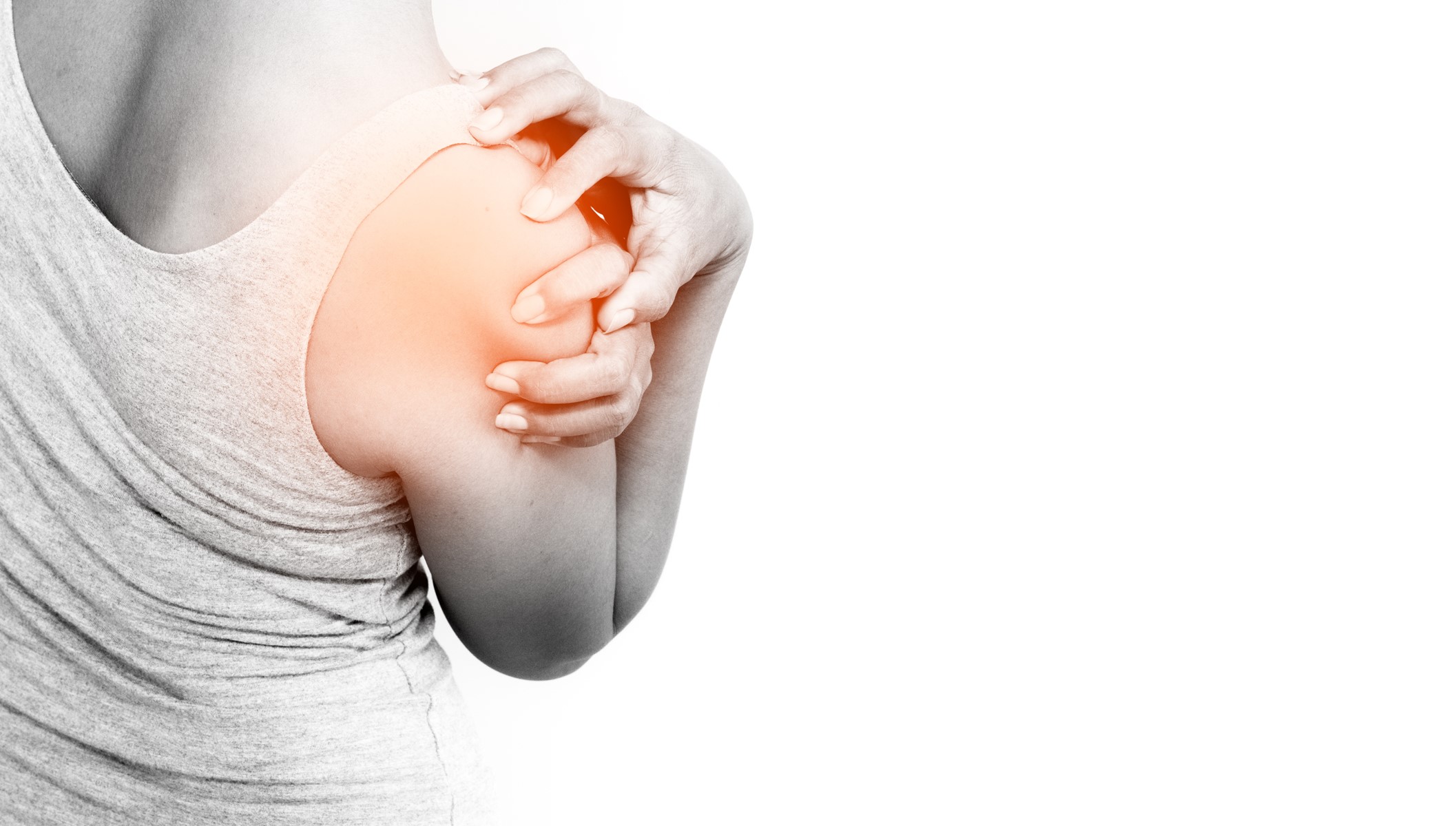
Catching Sharp Shoulder Pain?
If so, you could be suffering from shoulder impingement syndrome.
If so, this is a much watch video/article that will help you better understand the causes and exercises to help you relieve your symptoms.
What is shoulder impingement syndrome?
Shoulder impingement is a condition whereby the soft tissue and tendon inside your shoulder can catch on the undersurface of the bone.
This can with time lead to an inflamed, irritated and swollen tendon and also impact the surrounding structures like the bursa (fluid-filled sack that sits between the structure to help reduce friction).
Impingement can be classified into primary or secondary. Primary impingement is a result of bone changes and spurs that grow into the space between the ball of the shoulder joint and the top of the socket it sits in.
Secondary impingement, the most common type results from something else affecting the area, this could have been either direct trauma (landing on the shoulder), repetitive movements, muscle imbalances, or lack of stability in the shoulder joint.
The classic symptoms are referred to as a painful arc. This results from pain occurring between 80 to 110 degrees of shoulder movement (flexing forwards or out to the side).
This can cause an extremely sharp and very sensitive painful response local to the top of the shoulder which if very acute can result in the arm dropping down. In less severe cases, the arm can be lifted past and the pain subsides past 110 degrees.
Why? As the arm is lifted, the top of the arm (humerus) must clear the narrow space between the ball and socket region. It requires the muscles around the shoulder blade to stabilise and contract to help rotate the humerus (arm) during this movement. Many secondary impingements result from muscle imbalances through poor postures in the neck and back as well as inactive and tight tissue altering how the shoulder moves.

Early Advice
If the symptoms are extremely severe, early interventions of a steroid injection into the space can help settle down the symptoms.
Avoid movements that cause pain to break the cycle of pain and inflammation.
In all situations, maintaining pain-free movements and starting some early exercises are important whilst avoiding movements through the painful range is important.
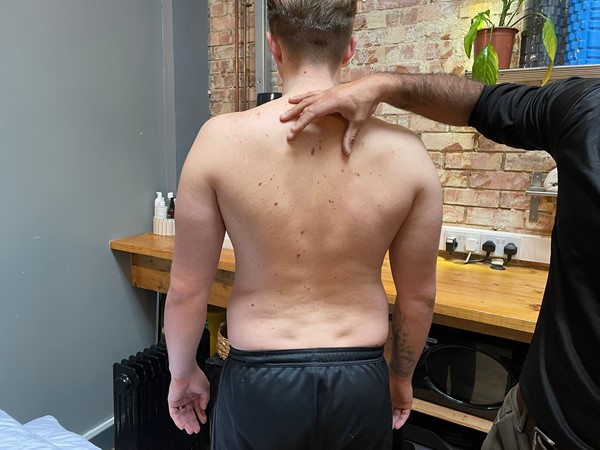
Technique: In sitting and standing, draw the shoulder blades down and together. Squeeze the muscles and hold for 10-12 seconds. Repeat frequently.
Top tip: Avoid lifting the shoulder up and using the trapezius muscles. Think about bringing the tips of the shoulder blades down towards each other.
Technique: In standing and using a wall/door frame, place your arm 30 degrees away from your side. Gently turn your body away from the outstretched arm.
Top Tip: Effective targeting this muscle means you feel the stretch through the chest and front shoulder area.
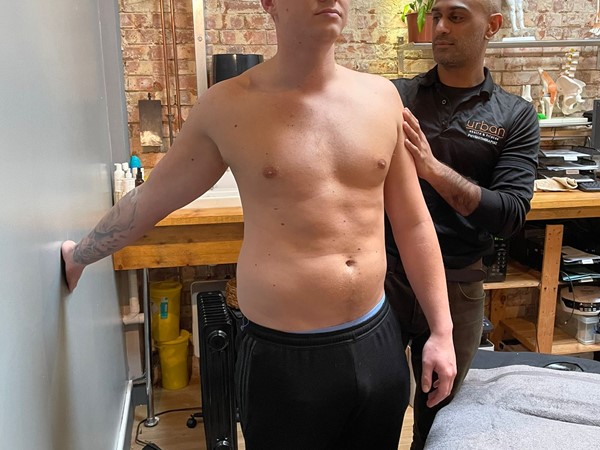
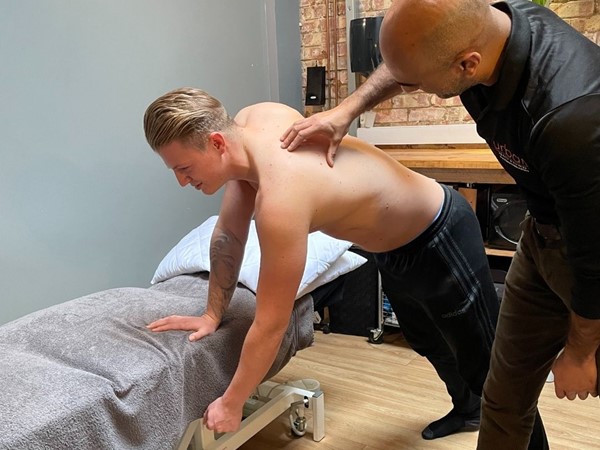
Technique: Hanging the affected arm down in front of you, gently circle the shoulder in small pain-free movements. Perform 30 - 45 seconds and increase time and sets as pain allows.
Top Tip Start with small circles and increase the size of circular movements as the pain subsides.
Exercise Sheet part 1Technique: Using a towel, small stick, lying on your back use both arms to lift them above your head. As the movements become easier, involve the affected shoulder more into the movement. Perform 8-12 reps. Begin with 1 set and progress to move if pain-free.
Top Tip When holding the towel, ensure the thumbs are turned out. This ensures the arm is rotated outwards and helps clear the affected area when moving the arm through the exercise.
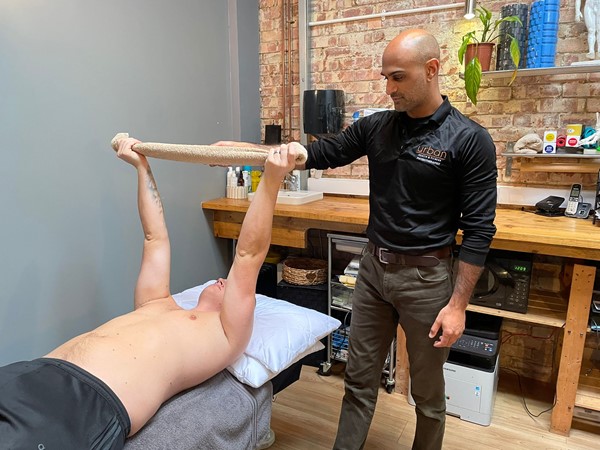
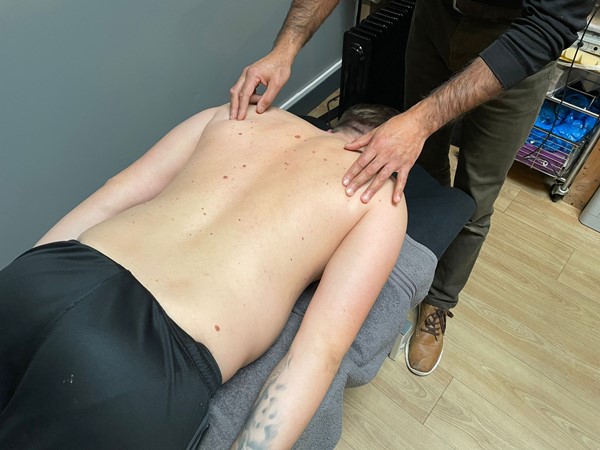
Lying on your front, with arms down to your side, look to perform the scapula resetting exercise.
Top Tip Look to ensure you activate the lower parts of the shoulder blade muscles by focusing on drawing the shoulder blades down and in.
To progress the last exercise, look to bring the arms up after you have brought the shoulder blades together.
Top Tip Look to ensure you activate the lower parts of the shoulder blade muscles first and then lift the arms up. Avoid pushing your head down to lift the arms up.
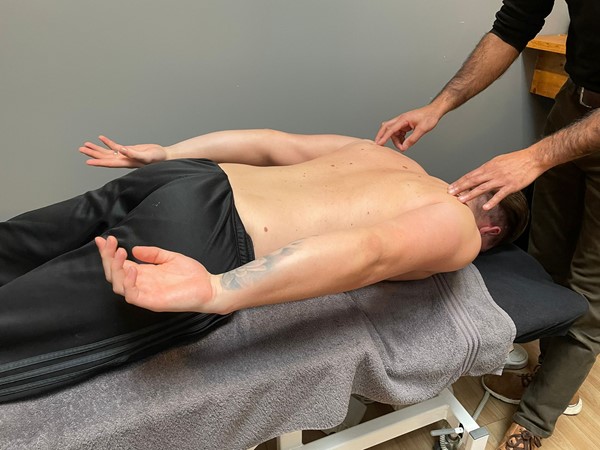
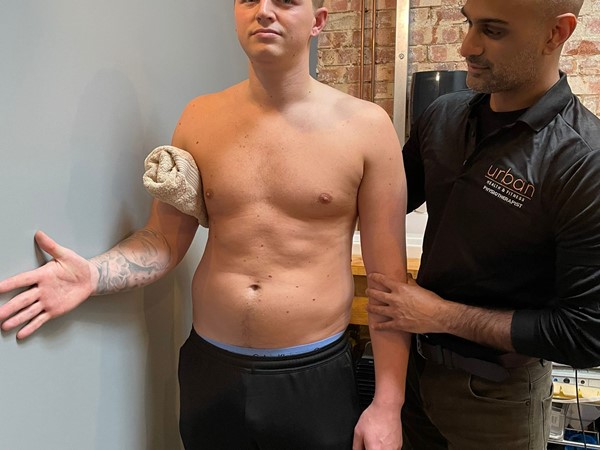
Strengthening the muscles at the back of the shoulder blade is extremely important. Start with placing a small towel between the armpit and keep our arm at 90 degrees bend. Draw your shoulders back down and together. Push the hand into a wall/door frame. Look to hold the contraction for 8-10 seconds. Fully relax between sets and complete 8-12 reps.
Top Tip You can also complete the same exercise with the arm at varying angles outwards. This will help to strengthen different parts of the muscle which will make the muscle more efficient in controlling the arm when lifting up.
Exercise sheet part 2In many situations, this condition is linked to how the shoulder girdle and neck move, and therefore other types of techniques and treatments can be effective in helping to speed up the recovery period. These include:
The above exercises are recommended for symptoms of shoulder impingement syndrome. If you are unsure about your symptoms seek the guidance of your doctor or speak to a member of the Urban therapy team with any questions you may have.